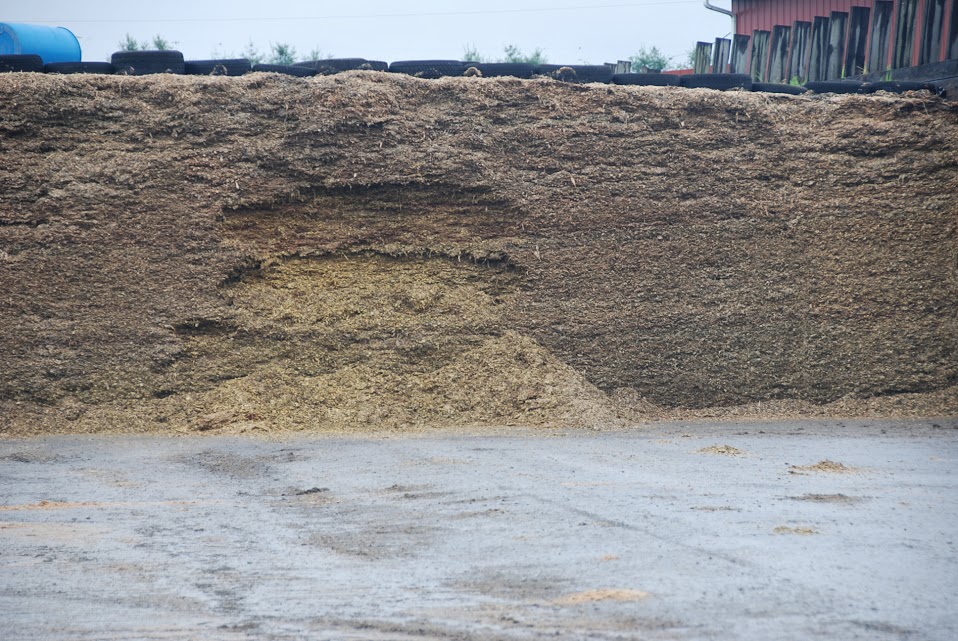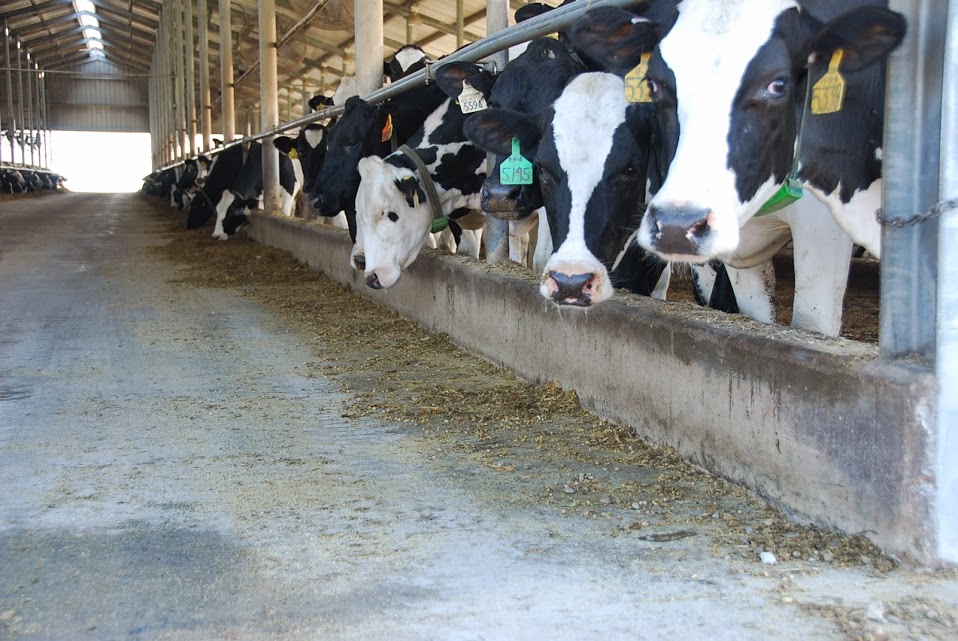



Managing Labour Responsible for Feeding the Lactating Dairy Herd
Ensuring rations are consistent in both amount and composition is critical to the efficacy and efficiency of a dairy unit.Hiring a member of staff suitable for this role should find a person possessing certain skills and a good attention to detail, says Donna Amaral-Phillips extension dairy specialist, University of Kentucky.
Feeding personnel are rated as one of the most important parts of the team and require specialist training.
Share Written Job Description
When hiring new employees, a written job description outlining the duties of the position and any special skills needed, such as ability to safely operate farm machinery, should be shared and reviewed during the interview process. For potential employees where English is not their native language, written job descriptions should be provided in the appropriate language. These discussions can help dairy managers not only determine whether the potential employee is a good fit for the position and their dairy operation, but also areas where additional training of a potential employee may be necessary to follow procedures unique to this farm’s feeding program. Once hired, employees feeding the milking herd and management should review these at least yearly to make sure they reflect the current position and expectations of both the manager and person(s) feeding the dairy herd. After this meeting, any modifications should be made and a printed copy provided to the employee(s).
Training Employees
New hires should be shown the proper way to complete tasks associated with feeding. This training needs to include not only the proper methods, but also practical, simple explanations as to why following the protocol a certain way is necessary. For example, employees should be shown to remove silage from a bunker silo with a silo facer or bucket from the top down instead of in the middle or bottom of the face. Explaining that removing silage from the top down versus another means decreases the amount of heating of the silage, improves intake of the feed being fed, and ultimately positively affects milk production and profit of the dairy. Hopefully, by explaining why the procedure needs to be done a certain way will prevent employees from modifying procedures that result in suboptimum performance. Safety procedures for operating equipment should also be included when training or reviewing feeding procedures.
New hires should be provided with written procedures (often called SOP’s or Standard Operating Procedures) on how to complete various feed-related tasks. These written procedures then can be referenced by employees when asked to complete the task by themselves after the initial training period. These procedures should be reviewed and updated when changes are made on how tasks are completed on farm. Besides training new hires, having up-to-date written protocols can help maintain consistency between employees or serve to help relief feeders accomplish the tasks correctly. These written protocols should include all tasks the feeder is expected to complete. As a starting point, these written protocols should include the following, which apply to your operation.
- Prior to each feeding (and loading TMR mixer)
- Determine amount of feed not consumed by each group of cows and adjust the amount fed, if necessary, to reflect changing cow numbers and intake per cow.
- Report any major changes in feed consumption to the manger and/or nutritionist
- Clean feedbunks of uneaten feed daily.
- Check waterers in each pen. Make sure they are operating properly. At least weekly, waterers should be emptied, scrubbed with a brush and weak chlorine solution (1 cup of regular strength household bleach per 5 gallons of water), cleaning solution dumped and replaced with clean, fresh water.
- Communicate to management or person ordering feed when feed supply needs to be reordered (unless feeding software has this capability).
- Loading of the TMR mixer:
- Proper order and location within the mixer for loading each feedstuff.
- Position of mixer when loading dry ingredients to minimize losses due to winds.
- Proper silage management practices:
- Bunkers: Small amount of plastic removed from the top and top spoilage removed and discarded. Silage needed removed with a bucket or silo facer from the top down, and very small quantity of silage is left unused at the silo face.
- Bags: Small amount of plastic removed and discarded in proper receptacle and feed carefully removed to minimize disturbing the silage face.
- Amount of each feedstuff to load per group. Includes instructions on how to increase or decrease each feedstuff based on previous intake and changes in dry matter content of wet ingredients.
- If ingredients are premixed before addition to the TMR, procedures and amounts of each ingredient needed to make preliminary mixes.
- RPM’s and length of time mixer PTO needs to run to mix feed.
- Observation of feed being mixed to detect dead areas within the mixer where feed is not mixing properly.
Fig. 1 Here is an example of using a bucket to remove feed from the center of the silage face, rather than from the top down.
- Feeding each group of cows
- Appropriate amount of feed delivered to each group of cows in a timely manner.
- Feed available for cows upon return from the milking parlor.
- Equal amounts of feed delivered throughout the entire length of the feedbunk.
- Tractor RPM’s needed during feedout.
- Feed delivered uniformly mixed and does not contain clumps of unmixed feed (i.e. unprocessed hay or baleage).
Fig. 2 In this photo, you can see an uneven feed distribution. The cows on the far end of the feed bunk have much more feed than the cows nearer the camera.
- Collect feed samples needed by nutritionist
- Wet ingredients (i.e. silages or wet byproducts) sampled according to procedures suggested by nutritionist, dry matter content determined, and adjustments made to feeding software or amounts added to the mixer based on dry matter results.
- Samples of feed ingredients collected according to procedures established by nutritionist.
- Routine maintenance of feeding equipment
- If the feeder is not responsible for maintenance, a protocol needs to be established on how to report possible issues.
- What to do if equipment is not operational at feeding times.
Providing Continuing Education
Training and providing educational information to feeders, like all employees on the dairy, should be a continuous process. Providing continuing educational opportunities either on-farm, locally based, or through the web can help employees understand why they must complete various practices as directed. With improved understanding of their jobs and underlining scientific concepts, dairy operations can see improved performance and may be able to incorporate improved ways of managing and completing feeding tasks.
Communication between feeders, management and nutritionist
One of the biggest challenges and opportunities for improvement is improving communication between employees responsible for the feeding, management team, the nutritionist and other farm employees. Routine meetings (weekly, bi-monthly, or monthly, depending on the farm operation) to discuss the feeding program should occur where feeding software and production reports are reviewed and opportunities for change and positive progress toward the dairy’s feeding goals are discussed. By discussing changes and progress as a group, employees have a better understanding of why changes are needed, can provide input needed by managers and nutritionists to help in the decision process, and feel like they are part of the decision process. These meetings are also an excellent forum for employees to offer suggestions of changes needed and help identify equipment and facilities needed to improve the feeding program in the future.
Take Home Messages
Management of labour responsible for the daily implementation of the feeding program for the lactating cows directly impacts production and profitability of a dairy operation. Routinely reviewing and updating job descriptions and standard operating feeding-related procedures, conducting meetings to review dairy cow and employee performance and future direction, and encouraging and facilitating continuing educational opportunities form the foundation for managing a dairy’s labour responsible for feeding the lactating herd. By providing a clear direction of expectations and a forum for their suggestions and concerns to be heard, employees feel like they are contributing to the success of the dairy business and have a stake in its future.
July 2014




